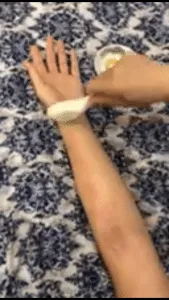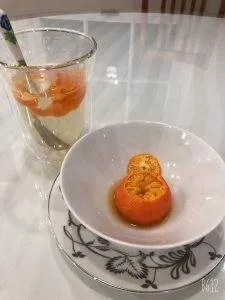By Xiaomei Cai, L.Ac., Ph.D. and Qineng Tan, L.Ac., Ph.D.
Coughing is the body’s mechanism for expelling from the lungs and windpipe anything that shouldn’t be there. A cough can be an indicator of many different types of illness. If you or someone in your home is coughing, you are probably worried that it might be a symptom of the coronavirus COVID-19. TCM and acupuncture practitioner use a complex set of diagnostic methods to determine what is causing a cough.
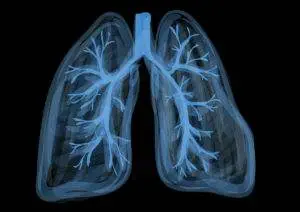
Right now, the world is gripped with a dangerously fast-spreading and deadly viral pandemic. No country, no community, no individual can avoid being affected by the situation that is quickly unfolding. Medical professionals around the globe are working as hard as possible to save those most vulnerable to novel coronavirus COVID-19, also called SARS-CoV-2.
As doctors of TCM and acupuncture with over 30 years of clinical experience in complementary and integrative medicine, we want to help the many people who may be struggling at home, unable to get in-person medical care because they are not in the highest risk groups. As TCM practitioners, we not only provide service for those who are sick, but also provide more health care services.
As of this writing, over 466,000 cases have been confirmed in the U.S. alone. Every day, the numbers of those who have tested positive for coronavirus, those hospitalized, and those dying increases.
We now know that COVID-19 presents differently in different people. Some people have contracted the virus yet feel no symptoms. Others experience only mild cold and flu-like symptoms. Yet others develop very severe respiratory problems, and some of these people are dying. Because the sickness is moving so quickly, hospitals do not have enough staff or equipment to treat any but the most desperately ill patients. Most people simply have to care for their symptoms at home. One of the most common symptoms amongst coronavirus patients worldwide is a dry, persistent cough.
What Causes Coughing?
Coughing is one of the human body’s ways of expelling foreign objects and pathogens. This could be anything from a bit of food you’ve accidentally swallowed, to a bit of dust, pollen, or other allergen that is irritating, or mucus created by the body in response to a viral or bacterial infection. Many conditions can cause a chronic cough, including:
is one of the human body’s ways of expelling foreign objects and pathogens. This could be anything from a bit of food you’ve accidentally swallowed, to a bit of dust, pollen, or other allergen that is irritating, or mucus created by the body in response to a viral or bacterial infection. Many conditions can cause a chronic cough, including:
- Cold or flu (viral infection)
- Bronchitis
- Pertussis
- Asthma
- Allergies
- Acid reflux/heartburn
- Pneumonia
- Post-nasal drip
- Sleep apnea
- Lung cancer
- Smoking or smoke exposure
- Tuberculosis
A cough involves a series of reflexive actions. Sensory receptors in the throat, trachea and bronchial tubes send messages to the brain when they are irritated; then the brain signals the diaphragm and external intercostal muscles to contract. This creates a vacuum in the lungs, into which air rushes to equalize the pressure. Then the abdominal muscles contract, the glottis opens, and the lungs force the air up and out through the respiratory tubes and finally, the mouth.
There are many different types of cough: A dry, hacking cough, a wet, “productive” cough, a cough that is worse at night, etc. The particular nature of the cough can tell a healthcare practitioner a lot about what sort of illness a patient may be suffering.
TCM for All Kinds of Coughs
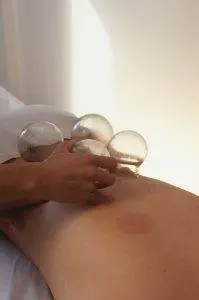
Traditional Chinese Medicine is a system of health care that draws from a variety of modalities, including acupuncture, herbal medicine, bodywork/massage, meditation and forms of movement such as Tai Qi and Qi Gong. This tradition goes back thousands of years, with written records regarding treatments of all kinds of illnesses through the centuries.
In a classic Traditional Chinese medical textbook written in the 1700s, Weng Bing Tiao Bian, Master Physician Wu Jutong offered specifics about various differentiations of “warm, seasonal” illnesses and how to treat them. He documented “Wen Yi,” translated as “Heat Disease,” which corresponds to our current scientific understanding of coronaviruses. So, we look at COVID-19 as a specific kind of heat condition. The virus clearly affects different people in different ways. This makes sense, from the TCM point of view. TCM always takes into account each individual’s constitution as a critical part of effective diagnosis and treatment. Each patient’s own health condition determines how the coronavirus will affect him or her, and the treatment of symptoms must be specific to that person.
In TCM, we don’t conduct testing to find specific microbial organisms such as bacteria or viruses. We treat the condition of a cough, for example, by looking and listening carefully to the patient’s symptoms, sensations, appearance of the tongue and skin, pulse, and even smell.
In Chinese medicine, we acknowledge four major factors that cause illness.
- External factors – According to TCM, here are six types of pathogens that make people sick. Wind, cold, summer heat, dampness, dryness, and fire.
- Internal factors – mood, emotions, and stress can cause illness: sadness, madness, over joyment, grief, worry, fear. Stress, anxiety, and depression can cause a lot of physical problems.
- Injury – a harm done directly to an area can cause blood stasis. For example, a broken bone might force a person to lie in bed, then they might develop complications that lead to other diseases.
- Toxins – inhalation or accidental consumption of toxins, overdose of medication, drug use, whether cumulative over time or sudden, can cause sickness.
COVID-19 coronavirus patients, in many cases, develop a cough with heat. Fever is the other most common symptom of the virus. People who are most vulnerable to severe symptoms are those who already have internal heat or Yin deficiency conditions. In a person who already has a lot of excess dampness in the body (often typified by being overweight), the virus can spread more quickly and linger longer. Traditional Chinese Medicinal herbs have been shown to be very effective helping alleviate all kinds of coughs.
TCM and Acupuncture Differentiation of Coughs
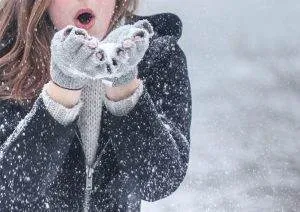 According to TCM, coughs can be caused by external factors or internal factors.
According to TCM, coughs can be caused by external factors or internal factors.
Coughs due to External factor differentiations include:
- Wind with cold – typically no fever but chills, heavy cough with white phlegm, stuffy nose, body ache, headache.
- Wind with heat – loud, rasping cough, hoarseness, sore throat, hard to produce phlegm, sticky yellow mucus, thirsty, headache, mild chills.
- Wind with dryness – dry, persistent cough, with a constant tickling sensation in the throat, thirst, little phlegm, hard to produce, headache.
Coughs due to Internal Factors include:
- Phlegm and dampness – stagnant lung energy, chronic cough, very productive with relief after coughing up sticky mucus. Coughing more in the morning or after eating, no fever or chills.
- Phlegm with heat – lung stagnation, phlegmy throat, sticky, hard to expel, chest pain, no fevers or chills.
- Liver heat attacks the lungs – sore, dry, red throat, little phlegm, difficult to expel, thirsty, with a bitter taste in the mouth, worse with anger.
- Yin deficiency in lungs – short coughs, little phlegm, maybe with a little blood, thirsty, dry, tends to be worse in afternoon or evening associated with warm hands and palms and soles, night sweats. This kind of cough can last a long time if not addressed correctly .
What Should I Do If I’m Coughing?
If you or someone in your household starts coughing, designate a room to keep them separate from everyone else. Bring them food and supplies, check temperature regularly. Call your healthcare provider and ask for advice. Due to the shortage of supplies for testing and treatment at medical facilities, most people, even with a cough and fever, must stay home and take care of themselves. Only those with the most severe inability to breathe should go to the hospital.
Home Remedies for Cough
-

Gua Sha therapeutic massage Take care to keep the throat moist at all times. We always recommend starting off the morning with body temperature lemon water. Drink lots of tea. Herb teas and green teas are preferable to black tea and coffee, which have high acidity.
- Dissolve 1 gm of salt into 100 gm of clean water and gargle with this solution.
- Gua Sha technique is a type of therapeutic massage. Use sesame oil, ideally, which is cooling and detoxifying, but olive or other types of vegetable oil will work. The person with the cough should lie on her stomach. With a smooth spoon, scrape down along the side of the spine, about two inches from the bony center, from the base of the neck all the way down to Sacrum area . Drag downwards on both sides, repeating until you see the skin become reddish or even purple. Do not scratch the skin. Then concentrate on the base of the neck; beneath where the C7 bone sticks out, scrape the area until it is red. If you live alone, Gua sha can be performed on the arms on both sides, palm facing up, from elbow down to wrist on thumb side, more at elbow area, until it looks like hive red color. Download video of Gua Sha technique.
- Ba Duan Jin – a series of breathing exercises, sometimes called the eight tapestries or silk brocades – is a very traditional practice in China. The earliest recording of these exercises dates back to the 12th century. Each exercise stimulates a particular meridian. Qi Gong exercise for the Lung system: Stand comfortably with legs parallel, shoulder width apart, arms at the sides. Breathe deeply into the abdomen, filling the lungs. Extend the arms side of body, upward with the inhalation. Mentally focus on collecting Qi (life force energy) from the sky/heavens. Exhale through the mouth, making a hissing sound: “Ssssssss.” This enhances lung function. Lower the arms and place them, palm-over-palm, on the lower belly/groin area (lower dantian) while exhaling. Men, touch the left hand to your groin with the right hand on top. Women, right hand on the tummy, with the left hand on top.
- Eat light, nutritious foods. Avoid fried foods and dairy. Emphasize fish and chicken for protein. Avoid spicy foods, coffee and alcohol–anything that adds more heat or dehydrates the body.
-

Tangerine skin tea Make tangerine skin tea: soak tangerines in salty water to clean it. Carefully remove the top of the tangerine, poke a few holes in the flesh of the fruit with a fork, sprinkle on a bit of salt, and replace the top. Place these tangerines into a bowl to collect juice. Steam the whole tangerines for 40 minutes, then eat the flesh. Then add more distilled water to the bowl, drink the steaming liquid as a tea.
*This article is for education from the perspective of Traditional Chinese Medicine only. The education provided by this article is not approved by FDA to diagnose, prevent, treat and cure human diseases. It should not stop you from consulting with your physician for your medical conditions. Traditional Chinese Medicine is based on Qi, which is an invisible force that usually cannot be observed by modern science. Because science focuses on testing ideas about the natural world with evidence obtained through observation, these aspects of acupuncture can’t be studied by science. Therefore acupuncture and Chinese herbs are often not supported by double-blind, randomized trials, and they are considered alternative medicine therapies in the United States.
